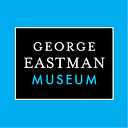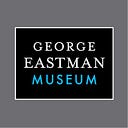John Pfahl: In Memoriam 1939–2020
By Lisa Hostetler, Curator in Charge, Department of Photography
People think the camera steals their soul. Places, I am convinced, are affected in the opposite direction. The more they are photographed (or drawn and painted), the more soul they seem to accumulate. — John Pfahl
John Pfahl, who died on April 15, was an artist steeped in America’s pictorial relationship to nature. For his first major body of work, Altered Landscapes (1974–78), he positioned lengths of string, tape, and similar markers in natural environments so they created a geometric shape when photographed from a specific vantage point. These optical illusions depended on the difference between a camera’s one-point perspective and human perception, which is binocular, and subtly disclosed our tendency to conflate the world around us with constructed images of it. Noted by critics for its witty comment on twentieth-century attitudes toward the natural world, the series became a touchstone for discourses about contemporary art and photography in the postmodern era.
Pfahl considered society’s attitude toward land and landscapes throughout his career. In Power Places (1981–84) and Smoke (1988–92), he pondered the disconcerting intermix of industrial plants in Edenic surroundings, and his Arcadia Revisited (1985–86) and Permutations on the Picturesque (1993–99) mused on our emotional attachment to places and pictures of places. A consummate gardener, Pfahl also created art from more humble sights and materials, such as organic household refuse (The Very Rich Hours of a Compost Pile, 1992–93) and the eccentric growth of certain flora (Extreme Horticulture, 1990–2002). Collectively, his work reckoned with humanity’s tendency to revere nature’s image while despoiling its reality.
Astute and perceptive, Pfahl was a warm person with a dry sense of humor and gentle demeanor. He was committed to the Eastman Museum, serving as a trustee and trustee emeritus since 1988. He was an active participant in Photography Collection Committee and Conservation Committee meetings. Thanks to his generosity, the institution holds more than 300 of his photographs, and as an early advocate of cold storage for the long-term preservation of color photographs, he helped make it possible for the museum to take its first step in that direction with his own work. In recent years, his art was widely exhibited both in the United States and abroad. At one point in 2016, all three exhibitions at the Eastman Museum contained a John Pfahl photograph: Photography and America’s National Parks in the Main Galleries, Sight Reading in the Project Gallery, and Selections from the Permanent Collection in the History of Photography Gallery. That same year, his recipe for “Hamburgers au Slivovitz,” a version of steak au poivre with Yugoslavian brandy (the recipe is from 1977), was published in The Photographer’s Cookbook, a testament to his Puck-like approach to art and life.

